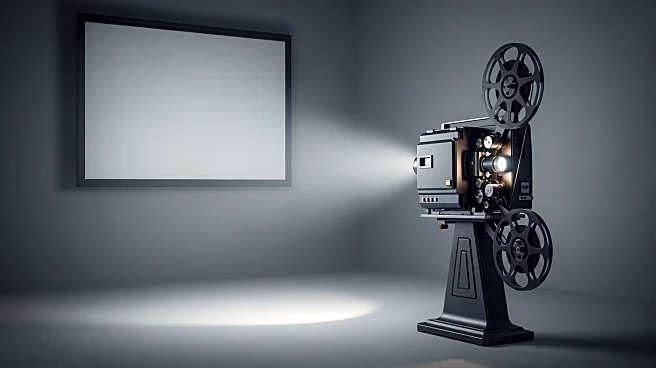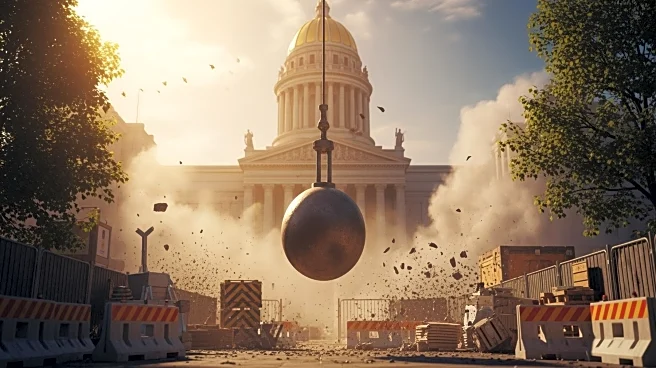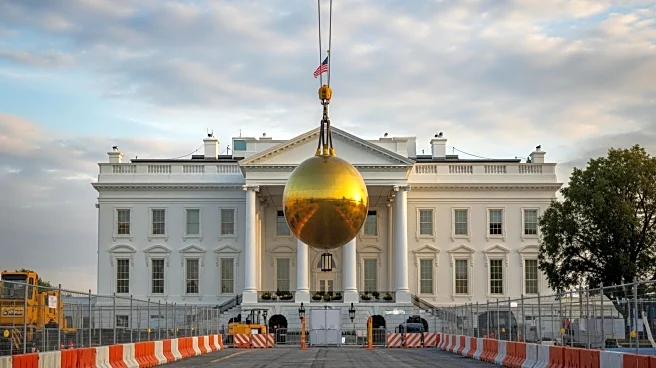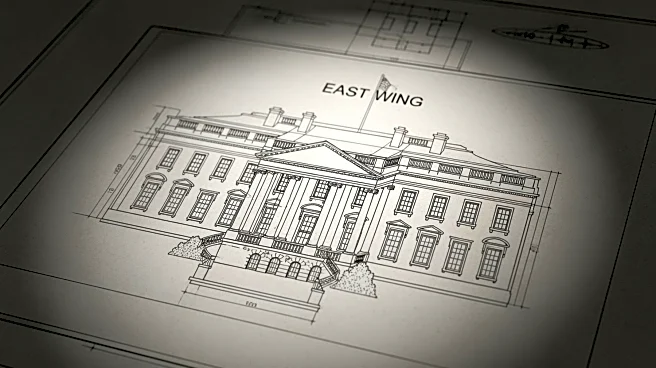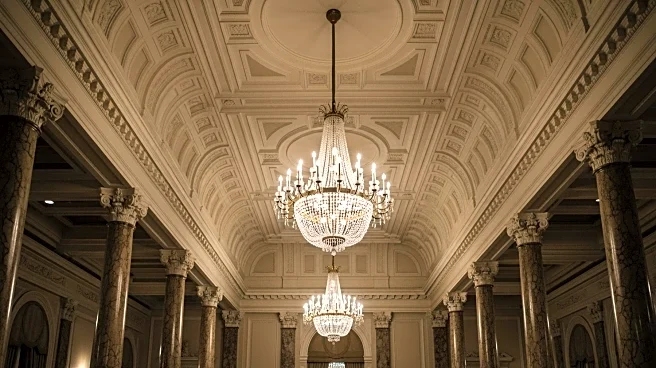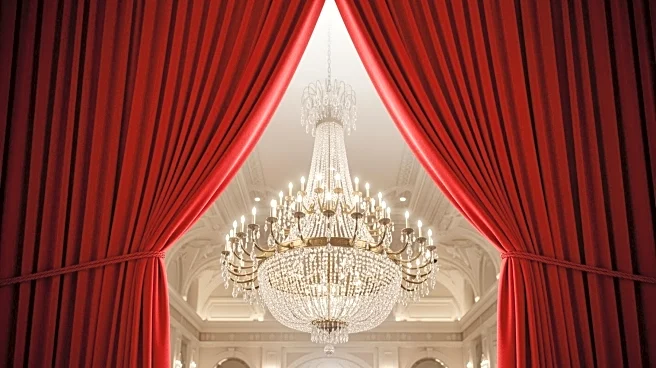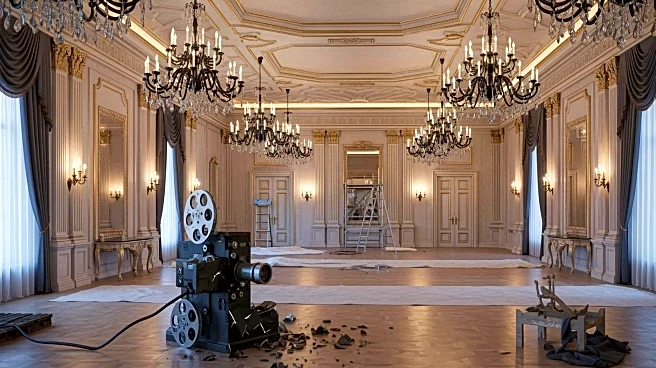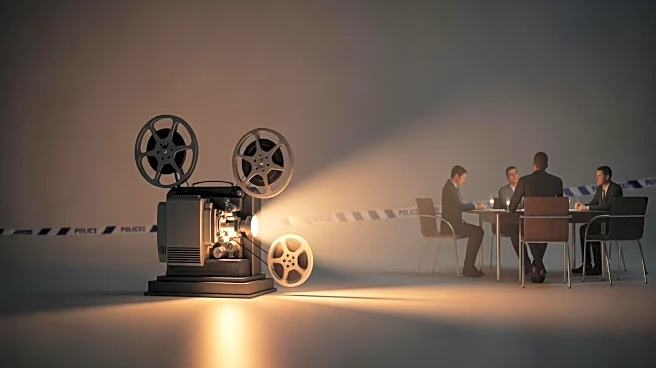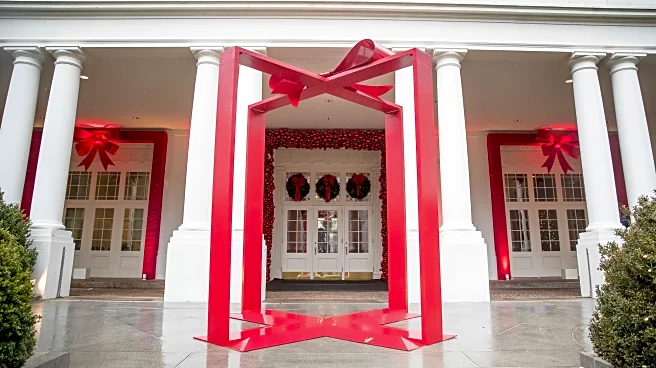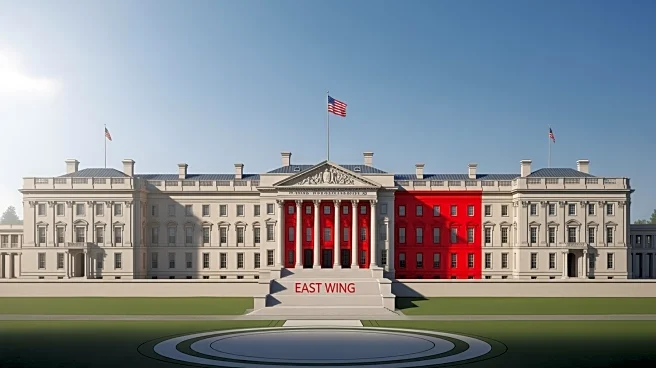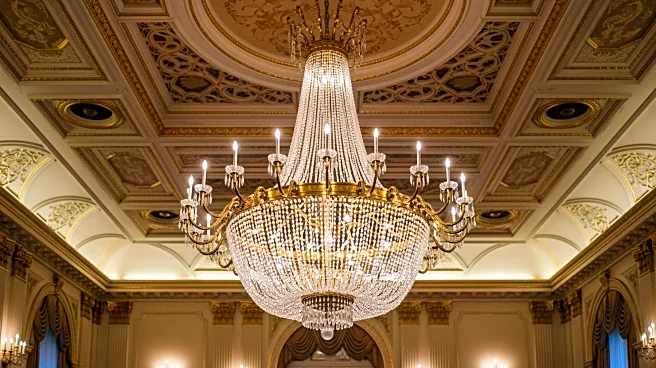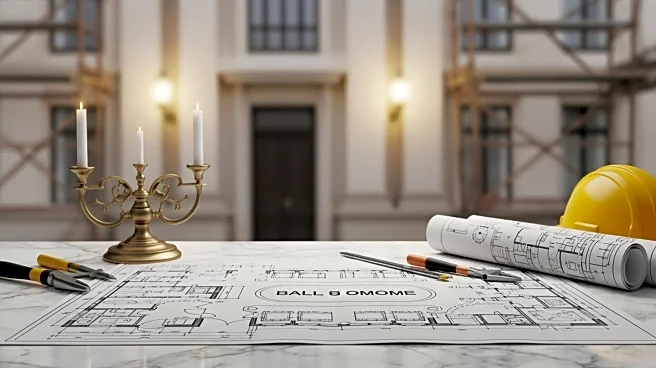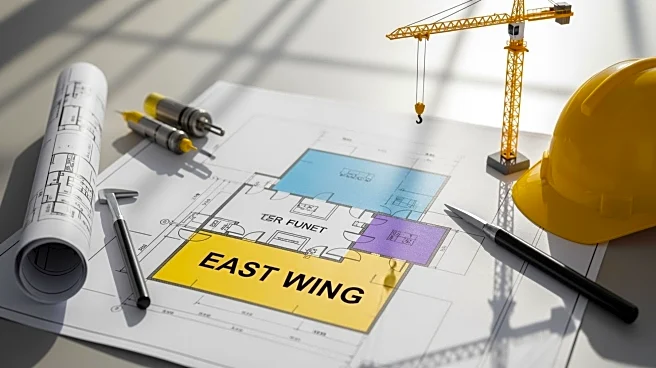What's Happening?
The White House Family Theater, a historic venue within the East Wing of the White House, has been demolished to make way for a new $300 million ballroom. This theater, originally converted from a cloakroom by Franklin Roosevelt in 1942, has served as a private
screening room for U.S. presidents and their guests for over 80 years. It has hosted a variety of films, from newsreels to musicals, and has undergone several renovations, the most recent being in 2004 under First Lady Laura Bush. The demolition is part of President Trump's initiative to redevelop the East Wing, although there are unconfirmed reports that a new theater may be included in the redevelopment plans.
Why It's Important?
The demolition of the White House Family Theater signifies the loss of a cultural and historical landmark that has been a part of presidential history for decades. This venue was not only a place for entertainment but also a space where presidents rehearsed important speeches. The removal of the theater is seen by some as erasing a piece of American history, as it provided a unique glimpse into the personal lives and leisure activities of U.S. presidents. The decision to replace it with a ballroom reflects changing priorities in the use of White House space, potentially impacting how future presidents engage with cultural and entertainment activities.
What's Next?
While the White House has not confirmed plans to build a new theater, there is speculation that a replacement may be part of the East Wing's redevelopment. This could restore the tradition of presidential film screenings, allowing future presidents to continue enjoying this unique perk. The redevelopment project itself is likely to attract attention from historians and the public, who may express interest in preserving the cultural aspects of the White House. Stakeholders, including historians and cultural preservationists, may advocate for the inclusion of a new theater in the plans.
Beyond the Headlines
The demolition of the White House Family Theater raises questions about the preservation of historical sites within government buildings. It highlights the balance between modernization and maintaining historical integrity. The decision to prioritize a ballroom over a theater may reflect broader cultural shifts in how presidential leisure activities are valued. This development could spark discussions on the importance of preserving historical venues and the role they play in connecting current generations with past traditions.
